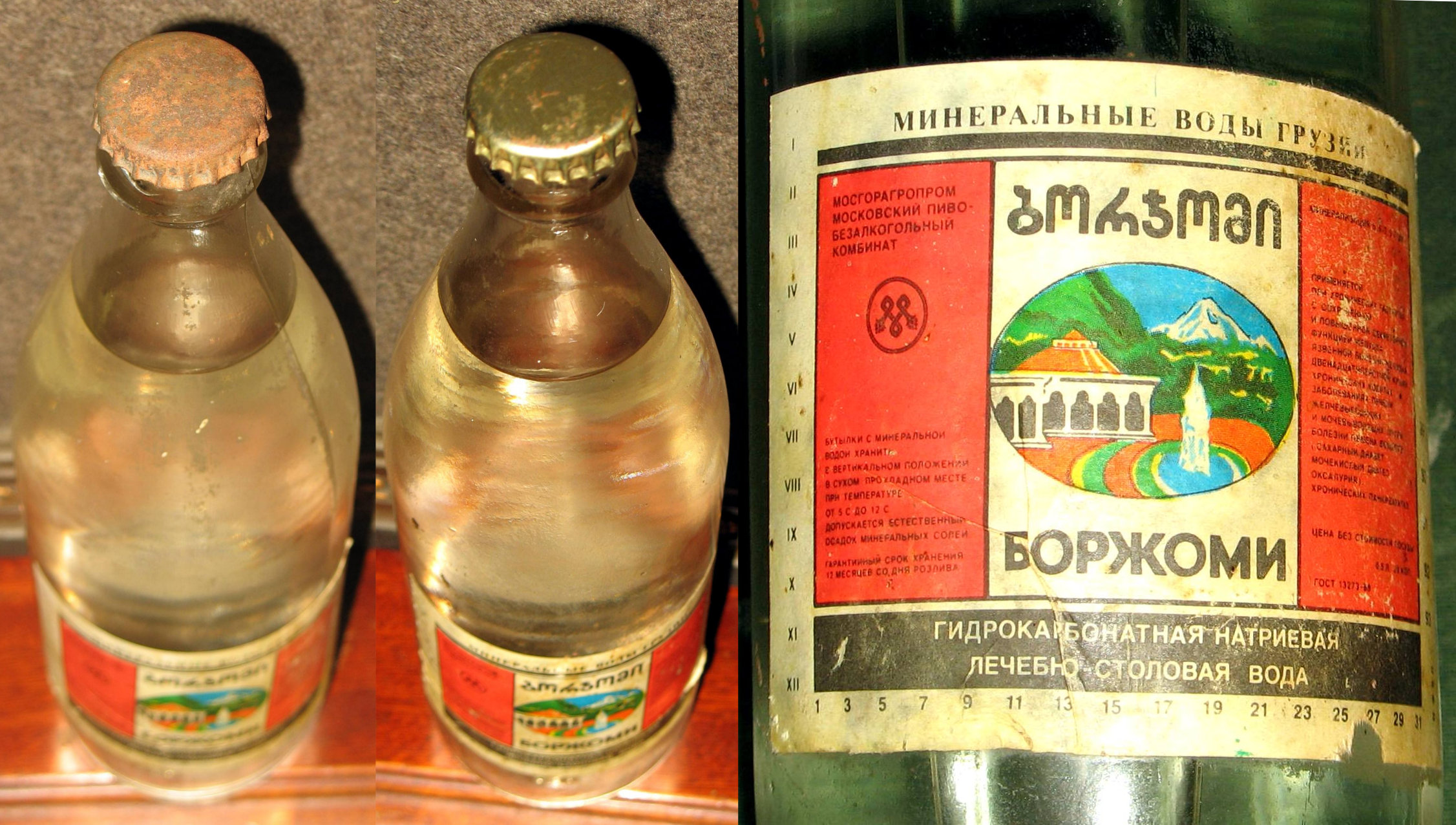Numerous varieties of soda water were sold in the USSR. Each factory produced its own water and bottled it with its own crown caps, which is why it’s very difficult for collectors to determine the exact - or even the approximate - date of manufacture of a particular product. As we know, the GOST standard indicates only the beginning of the issue period, so there can be considerable uncertainty in dating based on that method: GOST in USSR covered a period not of just one or two years but decades.
Bottle labels and marks can give us the exact date of issue of a product, however. Let us try to date some soda waters of the Soviet period in order to help us to date more precisely some of the crown caps used on them.
Crown caps with embossing were for the most part used only until the start of the 1980s, though of course embossing continued to be used occasionally even as late as the middle of that decade. After the Moscow Olympic Games 1980, most producers of non-alcoholic and soda waters used both colored and bold tin and steel crown caps. By the 1980s, aluminum crown caps were almost forgotten.
The first example shown, “Yessentuki-17,” is a colored crown cap on a soda water produced by Moscow Beer and Non-alcoholic Distillery of Mosgoragroprom. Its GOST is 13273 of 1973 and it was bottled in 1989. This is a standard steel crown cap and has an orange circle in the middle, a green background, and a rubber seal.
 Producer’s logo. “Yessentuki–17” with colored crown cap.
Producer’s logo. “Yessentuki–17” with colored crown cap.
The soda drinks “Borjomi” and “Narzan” of the same Distillery of Mosgoragroprom and bottled in 1989 used the GOST of 1988 and were capped with bold tin and steel caps covered with transparent colorless varnish; they also had rubber seals. This fact could be verified both by the picture of the crown cap and by information from the bottle label.
The classic embossed crown cap in USSR was completely forgotten by the middle of the 1990s. The change came by the use of a new, simplified producing technology and steel as replaced by tin. By the end of 1991, the country of USSR disappeared and the new epoch of the Russian Federation began.
On the following pictures, soda water “Borjomi” GOST 13273-88 has both a tin crown and steel crown caps. The “Narzan” soda GOST 13273-88 is capped with a tin crown cap. So we can see that soda waters from the same producer had three types of crown caps: steel, tin, and colored tin.
 “Borjomi” – steel (left), tin (right).
“Borjomi” – steel (left), tin (right).
 “Narzan” – tin, bottled in 1989.
“Narzan” – tin, bottled in 1989.
Through this investigation of one example, we have discovered some interesting facts about the crown caps used by Moscow Beer and Non-alcoholic Distillery in 1989.
To repeat: the dating of embossed crown caps using GOST is the wrong approach, as our example of soda water “Yessentuki–17” with GOST of 1973 but bottled in 1989 shows. The difference in caps is obvious.

Comments
Теперь с уверенностью мы можем на этом примере точно утверждать что 1989 год- это год когда "лысая" пробка окончательно закрывает последний временной период СССР до конца 1991 года напитков как минеральных так и соков-сиропов-лимонадов и пр...
Только надо добавить, что вывод касается конкретно взятого МПБК "Очаково", так как на Украине, например, полно цветных пробок от вод с датами 1990-1991 гг. (они есть в этом каталоге)
Я ж написал (на этом примере....) Украина-Прибалтика-Грузия-Молдавия и пр.... республики СССР естественно не относятся. Сами знаете по чему? Развал СССР начался и бардак начался. Тут не до пробок было.
Вячеслав. Я собрал около 20 предметов с лысыми пробками но естественно это Москва. Можно конечно табличку с фото сделать? Там и заводы указать можно и напитки и пр......но оно кому то надо? Вы же знаете какое отношение на форуме и у большинства колл-в к лысым пробкам. Они по барабану всем ! Кроме меня конечно.